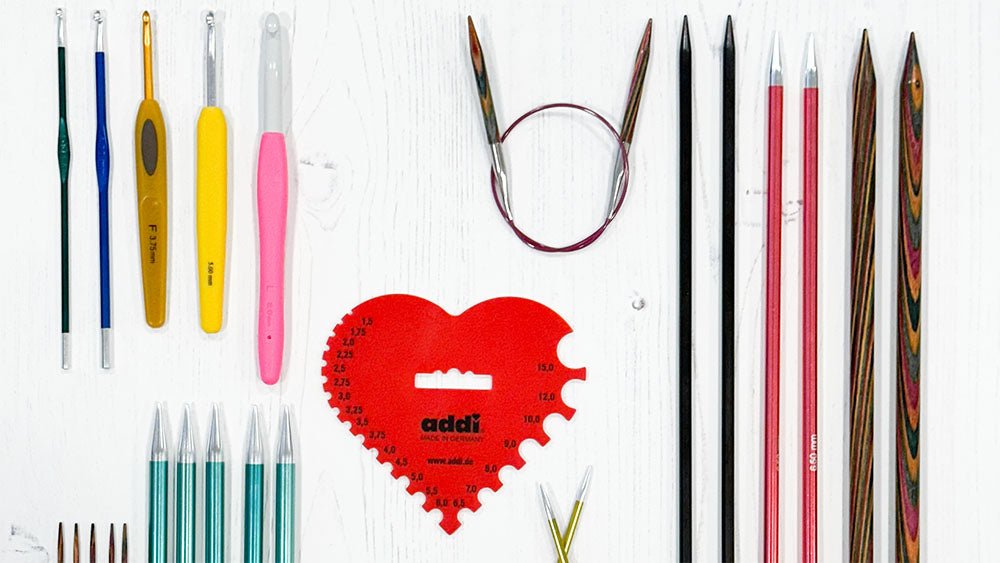Why is needle size important?
It is essential to use the correct needle size for your chosen pattern and yarn type to give your knitting the correct gauge or 'tension'
Larger needles sizes are for chunkier wool and smaller for finer wool.
In our Yarn Weights Chart you can find the recommended needle size. It is important however to understand it is a 'recommended' needle size you will notice that designers might use a different size needle for a yarn to give a particular effect.
As a beginner you are in safe hands if you follow the pattern recommendations.
How do I work out what needle size I need?
In any given pattern, they should provide a recommended needle size for the proposed yarn.
You will also find a recommendation for the needle size on the ball band ( normally the paper wrapper for the yarn)
As you get more experienced as a knitter, you will start to settle in to your own tension and this may be tight or loose, with practice you will then get a feel for what needle size you will need depending on how you prefer to work.
It is a good idea when starting a big project to knit a square of fabric called a 'tension square' you can then work out how many stitches its taken to get to a certain size or length. Working out your tension early on in a project will prevent you having to redo sections or indeed starting the whole project over again.
Lastly not knitting to the correct tension and say, knitting too tightly, can use up the wool you have faster than it should.
What is the best needle size for beginners?
For beginners starting with 6mm and up with a chunky yarn is considered a great place to start. You can also go with 10mm needles and a super chunky yarn.
Also the length of a needle is important, it is easier to handle a shorter needle such as 25-30 cm long.
What is the best material for needles?
This can be a matter of personal opinion, but before you buy a lovely full set of needles, it is important to try different materials.
Needles can be made of wood, plastic, metal. Further there are different types of wood and plastic and metal.
Wood can be said to 'grip' the wool a little better, and metal can be more 'slidey'
Needles also have different coatings which can make a big difference.
Check out our range of needles here:
Knitting Needle and Crochet Hook Size Conversion Chart
| Metric Size | UK Size | US Size | US Crochet Hook Size |
| 2.0 mm | 14 | 0 | - |
| 2.25 mm | 13 | 1 | B |
| 2.5 mm | - | 1.5 | |
| 2.75 mm | 12 | 2 | C |
| 3.0 mm | 11 | 2.5 | |
| 3.25 mm | 10 | 3 | D |
| 3.5 mm | - | 4 | E |
| 3.75 mm | 9 | 5 | F |
| 4.0 mm | 8 | 6 | G |
| 4.5 mm | 7 | 7 | - |
| 5.0 mm | 6 | 8 | H |
| 5.5 mm | 5 | 9 | I |
| 6.0 mm | 4 | 10 | J |
| 6.5 mm | 3 | 10.5 | K |
| 7.0 mm | 2 | - | - |
| 7.5 mm | 1 | - | - |
| 8.0 mm | 0 | 11 | L |
| 9.0 mm | 00 | 13 | - |
| 10.0 mm | 000 | 15 | - |
| 12.0 mm | - | 17 | - |
| 15.0 mm | - | 19 | - |
| 19.0 mm | - | 35 | - |
| 20.0 mm | - | 36 | - |
| 25.0 mm | - | 50 | - |

